The Apple iPhone 6s and iPhone 6s Plus Review
by Ryan Smith & Joshua Ho on November 2, 2015 8:00 AM EST- Posted in
- Smartphones
- Apple
- Mobile
- SoCs
- iPhone 6s
- iPhone 6s Plus
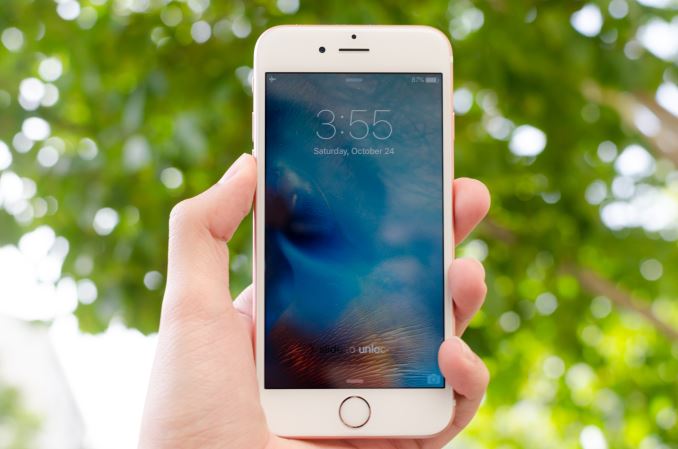
To be perfectly honest, this past year has been remarkably boring in the mobile segment. For whatever reason, phones have either stood still or regressed when it comes to overall quality. There are a few stand-outs that have been worth talking about like the Galaxy S6 lineup and the Galaxy Note5 lineup, but for the most part every phone I’ve reviewed this year has been disappointing in some way. I carry an iPhone 6 to make sure I stay current on changes in iOS, but my primary phone continues to be an HTC One M7. I was hoping to get a new Android phone this year, but so far nothing has really piqued my interest.
Part of the problem this year is that performance and battery life haven't been the most impressive in a lot of cases. By this point, it's really not a surprise that Snapdragon 810 doesn't deliver as much performance as it needs to for the amount of power that it draws. However, even independent of SoC it seems a lot of OEMs haven't really pushed the bar in design or attention to detail. Some phones have cameras with almost unacceptable post-processing quality, others continue to have poorly calibrated displays, and the ones that have none of those have problems with software experience or something else. In general, no Android phone I've seen this year really delivers everything that I'd want in a single package. There are phones that are clearly better than others, but nothing that rises to the level that I'd want before putting down a few hundred dollars.
In light of this lack of competition in the market, it's arguable that Apple is facing less competition than before. The iPhone 6s would continue to sell quite strongly even if this year's refresh was relatively minor as they would still end up quite strong competitively as they would be able to capitalize on momentum from previous years. If you were unfamiliar with the iPhone 6s and Apple's iPhone launch cycle, at first you might be convinced that Apple has done exactly that. However, in general the iPhone release cycle is such that industrial design is constant for two years at a time, so every other year sees a design refresh. When the design isn't refreshed, the phone often carries significant internal changes. In the past, the iPhone 3GS brought a better SoC, a faster modem, and a better camera. The iPhone 4S brought a new SoC, camera, and Siri. The iPhone 5s brought a new SoC, camera, and TouchID. In general, we can see a pretty clear pattern of evolution but it seems that with the 5s the refresh launches have generally brought new features as it has become insufficient to simply ship a faster SoC and possibly a modem and camera refresh to justify a new smartphone.
In the interest of diving into these changes at a high level, we can start with our usual spec table, which can give an idea for whether there's anything immediately worth talking about.
| Apple iPhone 6s and 6s Plus | ||||
| Apple iPhone 6 | Apple iPhone 6 Plus | Apple iPhone 6s | Apple iPhone 6s Plus | |
| SoC | Apple A8 2 x 1.3GHz Apple Typhoon |
Apple A9 2 x 1.85GHz Apple Twister |
||
| GPU | PowerVR GX6450 | PowerVR GT7600 | ||
| RAM | 1GB LPDDR3 | 2GB LPDDR4 | ||
| Display | 4.7-inch 1334 x 750 IPS LCD | 5.5-inch 1920 x 1080 IPS LCD | 4.7-inch 1334 x 750 IPS LCD | 5.5-inch 1920 x 1080 IPS LCD |
| Size / Mass | 138.1 x 67 x 6.9 mm, 129 grams | 158.1 x 77.8 x 7.1 mm, 172 grams | 138.3 x 67.1 x 7.1 mm, 143 grams | 158.2 x 77.9 x 7.3mm, 192 grams |
| Camera | Rear Facing 8MP iSight with 1.5µm pixels + True Tone Flash Front Facing 1.2MP F/2.2 |
Rear Facing 8MP iSight with 1.5µm pixels + True Tone Flash + OIS Front Facing 1.2MP F/2.2 |
Rear Facing 12MP iSight with 1.22µm pixels + True Tone Flash Front Facing 5MP F/2.2 + Retina Flash |
Rear Facing 12MP iSight with 1.22µm pixels + True Tone Flash + OIS Front Facing 5MP F/2.2 + Retina Flash |
| Storage | 16GB/64GB/128GB | |||
| I/O | Apple Lightning connector, 3.5mm headset | |||
| WiFi | 2.4/5GHz 1x1 802.11a/b/g/n/ac, BT 4.2, NFC | 2.4/5GHz 2x2 802.11a/b/g/n/ac, BT 4.2, NFC | ||
| Price | $549 (16GB) | $649 (16GB) | $649/749/849 16/64/128GB | $749/849/949 16/64/128GB |
At a high level, there are already a number of changes that we can talk about. The SoC is new and improved for this year with improved performance and power. The rear camera now supports 4K video recording and has higher resolution photos than what we’ve seen before. The front-facing camera is now higher resolution as well. The iPhone 6s finally has 2 GB of RAM, with improved power and bandwidth along with improved multi-tasking that comes from additional RAM. The modem now uses less power and also capable of higher throughput, as is the WiFi chipset.
Outside of these spec sheet changes, Apple has implemented a number of new features. One of the major highlights is 3D Touch, in which the display is force-sensitive and allows for new user interface actions based upon the amount of pressure applied to a point on the display. The front-facing camera now uses the display as an LED flash of sorts in low light, which measures ambient light in order to determine what white balance to use along with a backlight driver that temporarily spikes brightness to up to three times the normal maximum brightness for effective lighting. Both cameras now have Live Photos, which records a 1.5 second segment of video before and after the photo taken to capture a moment rather than an instant without the complication that comes with videos.
Design
Of course, before we can get into all of these changes we can start by focusing on the most immediate change, which is the design. For those that are unfamiliar with Apple’s iPhone launch cycle, the S launch cycle usually retains the same industrial design as the previous iPhone. As a result, the changes here are rather scarce. Those interested in a detailed description of the design should refer back to the iPhone 6 review.
However, there have been changes to the look and feel of the iPhone 6s lineup. The first, and most immediate change is the addition of a new color that Apple calls Rose Gold. This is much redder in tone than what we saw with the Apple Watch Edition, to the extent that it looks more like a light pink with a gold tinge rather than gold with a light pink tinge. I’m probably the last person in the world to consult on what color looks best, but I don’t really see anything wrong with this color.
Outside of color, the iPhone 6s lineup has changed in a noticeable way when it comes to materials and in-hand feel. The aluminum back cover is now 7000-series, which increases rigidity with the addition of zinc which increases yield strength, or the pressure needed to permanently deform the material. It’s likely that relative to the iPhone 6, ultimate tensile strength has also increased, although given that tensile strength is a test of how well the metal avoids breaking apart it’s unlikely that this property matters all that much. If you're actually reaching the ultimate tensile strength of a phone's back cover, you've probably already broken everything else in the phone.
With the use of this new aluminum back cover, the phone should be less susceptible to bending under extreme forces. I never had a problem with this when testing the iPhone 6 last year, but it shouldn’t be a problem now. Oddly enough, I did notice that the iPhone 6s is easier to grip than the iPhone 6, but the difference isn’t big enough that I would avoid using a case.
The other change is a new type of cover glass on the display, which uses a dual ion exchange process to make it tougher. According to Apple, this glass is the most durable of any in a smartphone today. A simple search with Google gives reason to suggest that Corning is making this glass as Corning holds a patent for this process. While we have no idea what Apple’s process is, the same dual ion exchange process occurs, which creates two distinct stressed layers that improves impact strength relative to a standard single ion exchange that is seen in Gorilla Glass.
Other than this, the design of the iPhone 6s remains quite good. The rounded edges and slightly curved glass help with in-hand comfort and things like the placement of the 3.5mm headphone jack on the bottom is a smart idea as the headphone jack is easily accessible when the phone is inside a pocket. We can talk about how the camera hump means that the phone doesn't rest completely flat on a table, but given that the phone has gotten about 15 grams heavier in both the iPhone 6s and 6s Plus I suspect it makes sense for Apple to avoid making the phone any thicker with extra battery than they have now. I would rather see thinner lines to insulate antennas here, but I suspect that there is some RF requirement that makes it difficult for this to happen.
Compared to something like the HTC One M9 which also has an aluminum unibody design Apple is far ahead in terms of overall ergonomics and cohesiveness. Relative to the Samsung Galaxy S6 I think the iPhone 6s is noticeably more comfortable due to the more rounded edges, but the iPhone 6s Plus and Galaxy Note 5 are pretty close in overall ergonomics. I do wish Apple would go to a front-ported speaker for the iPhone, but it seems that this is unlikely to happen due to the home button and bezel constraints.


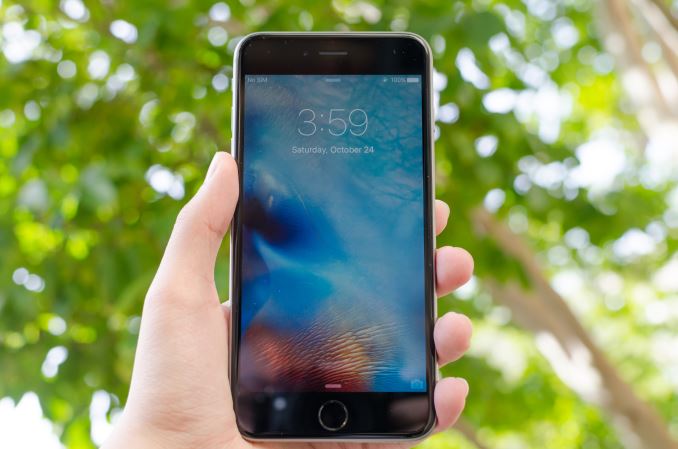
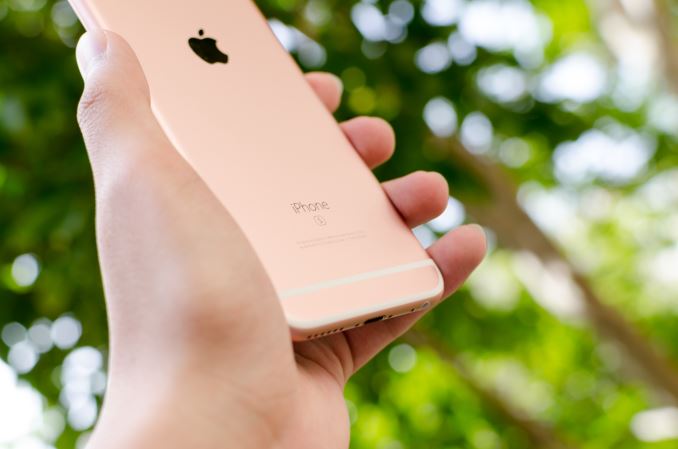
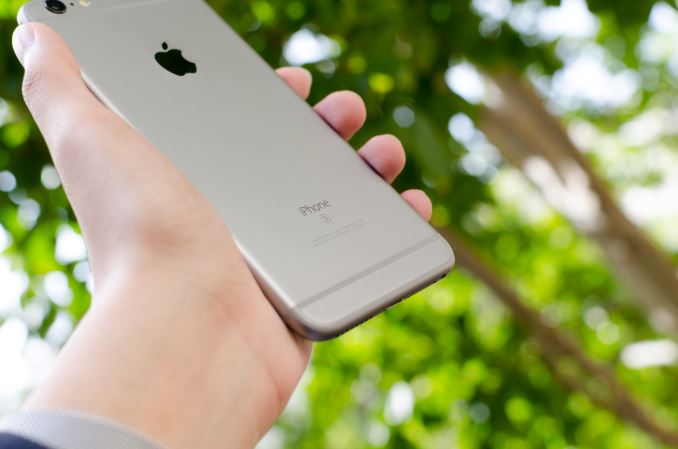
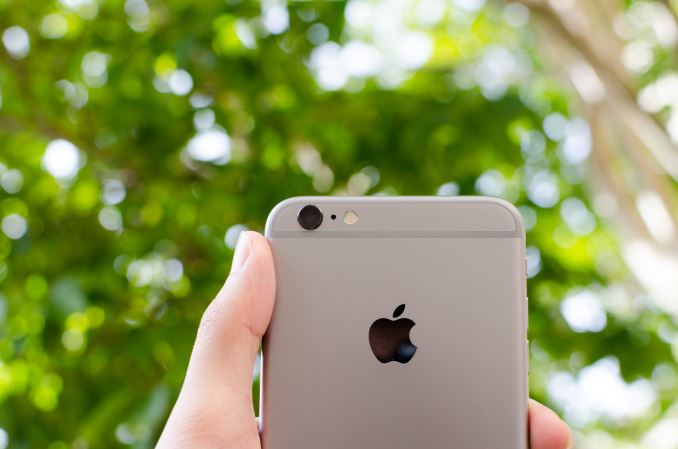
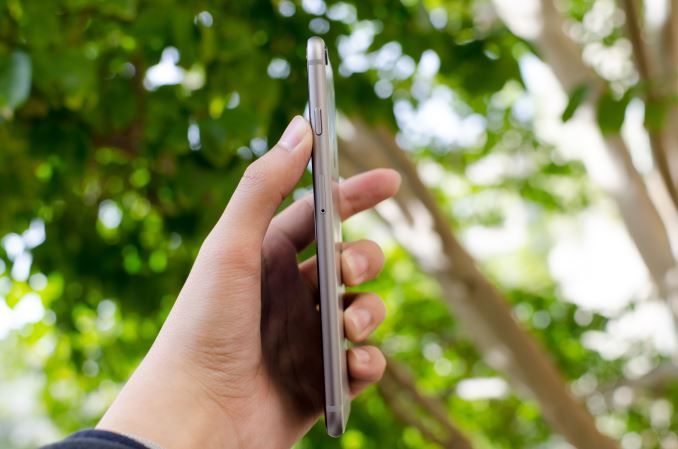
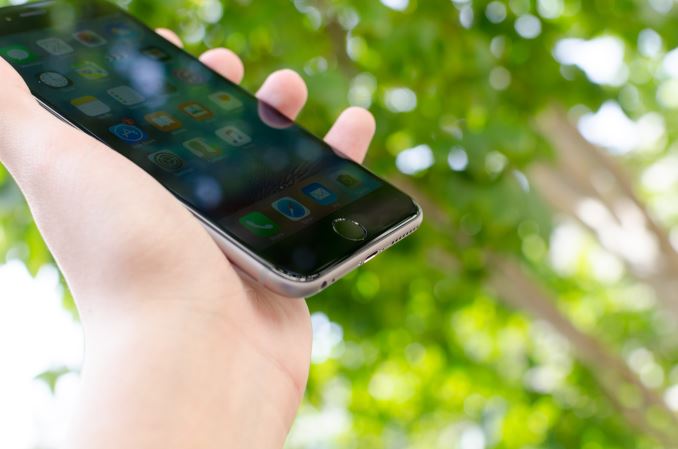
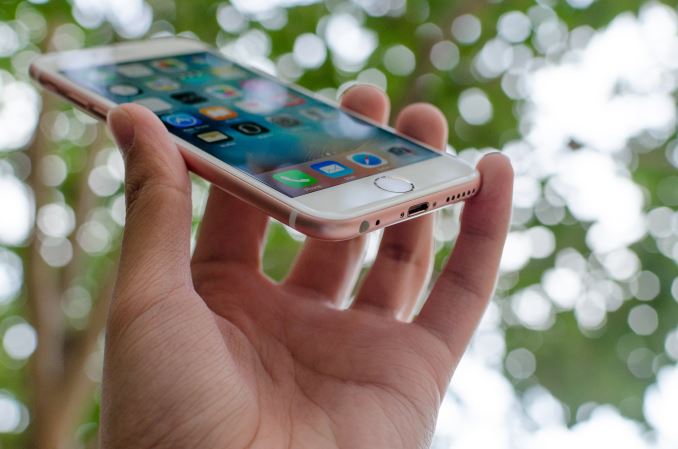








531 Comments
View All Comments
nerd1 - Saturday, November 7, 2015 - link
720p screen in 2015, worse battery life, no sd slot, no wiress charging, terrible camera and still THE BEST phone huh?It has best performing processor, no one argues that, but I still wont touch it with a stick.
JaytB1 - Sunday, November 8, 2015 - link
I use iPhone mainly because of the better security/privacy, no carrier/manufacturer delay/total dismissal of security/OS updates, earlier/exclusive/better releases of triple A games/apps and uncluttered interface. I agree with the gold award, the iPhone 6s (plus) is the first phone in a while that made me see that there are still possibilities to innovate in the smartphone space.I've seen Android users avidly defending their high PPI's, megapixels, core counts. Oh, but it's customizable and I can put a ton of widgets on my homescreens. There's only a small minority of tech obsessed people who care (proof is in the huge low/medium end market share, indicating the amount who don't care for specs but just want a working phone). For me, all I want is to launch an app, not stare at my home screen. In the past, Android users where more often than not boasting about benchmarks and how their hardware was superior. Now that the tables are turned, hardware all of a sudden doesn't matter as much anymore or the tests must be rigged by a biased Anandtech (who has nothing to gain and everything to loose if they were posting nonsense).
I've seen Samsung and other manufactures add so many gimmicks to their phones, many of which are plain impractical (try doing 'airview' while jogging and you'll get the picture).
I admit that fast charging would be nice but, for me, completely unnecessary (it's not like an iPhone charges slow in the first place).
Then there's wireless charging, you do realize that you still have to plug in the charge pad with a cable right? So the only difference is that you don't need to plug that cable into your phone, but you'll need more power to fill your device up as compared to using a cable (more waste power) and a permanent spot for your charging pad. Again, for me I don't really see the appeal for that either.
We could also talk about PPI but to keep it brief, I'd rather have a device perform well with individual pixels I can't distinguish, than a screen that would impact performance with pixels I still can't see... But more of them.
I could go on about how a blind photo evaluation test on a respected Android site had Android users voting the iPhone 6s as having the best overall picture quality, but now that the iPhone scored a tiny bit lower than some Android phones in one test, it suddenly has a 'far inferior' camera. Then there's the RAM, curved screens and so many other things I could mention, but my point is that I think Android users can't recognize a genuine game-changing feature-list because they're so used to getting bombarded by tons of arguably useless high spec lists and gimmicks that are marketed as 'the next big thing'.
It's almost as if Google took over the reality distortion field from Apple. Just wait a couple of years when all Android devices have 'Android sense' (or something) displays (3D touch), THEN it will be a game changing feature because they'll have 1000's of pressure levels they can sense as compared to the 'useless' iPhone's (hypothetical) 128 levels.
Don't get me wrong here, I'm not trying to bash Android or people who choose to use it, I just don't like those who post nonsense without anything to back it up just so they can sleep at night having convinced themselves that they bought the right phone. I've been a reader of this site for years and believe their test results to be correct, as they've always been. People who claim otherwise should come with facts or stop sprouting nonsense.
I, for one, agree with the review and think it's the phone with the best all round feature set on the market today. Is it perfect? Of course not, but it's a genuinely forward thinking and exceptional smartphone in a stale smartphone market, and that deserves that gold award in my book.
Thanks for the review!
Aritra Ghatak - Sunday, November 8, 2015 - link
As the reviewers pointed various aberration and distortions associated with using a brighter lens and that it is wise Apple went with the F 1/2.2 aperture lens. Could you please explain how Samsung manages with an F 1/1.9 aperture lens in Galaxy S6? Or for that matter the F 1/1.8 lens in LG G4 or Nokia Lumia 720/730?patamat - Sunday, November 8, 2015 - link
Well, we all know who Anand went to work for after writing few "balanced" reviews like this one.(apple ...)
Psymac - Monday, November 9, 2015 - link
Where is the phone function analysis of this iPhone?zimmybz - Tuesday, November 10, 2015 - link
I guess I'll try to build the bridge for the Droid guys here that are having a hard time.I haven't had an iPhone since the Galaxy S came out. Been a droid user since.
I recently got a 6S Plus. I sold a Note 5 and cancelled a pre-order for a Nexus 6P.
I will say it since nobody else will. The Note 5 has a great camera, S-Pen is cool, and enough RAM to keep multi-tasking running, but otherwise it's a shitty phone. The battery life and Touchwiz still leave a LOT to be desired. Build quality is great, but it suffers from what every other Droid phone suffers from - fractured, fragmented hardware eco-system and specs driven production. (Hang on)
If you need to know why you should cancel a 6P pre-order, look at the subreddit (Holy crap, lol.)
Anyways, in my first week with the 6S Plus, I hit 22% battery with 88 hours standy and 13 hours usage. That is completely insane.
Back to the Note 5 - look at the graphs on the review here. This phone absolutely DOMINATES the Note 5 across the board, a fact which I can confirm first hand.
I can also tell you that holding the phones side by side looking at the same picture taken on the Note 5, the displays are functionally indistinguishable from the other. (So much for all that resolution, I guess)
This is a large reason why the Note stutters against the 6S Plus. It's pushing a LOT of pixels that aren't really evident in day to day use, especially sitting next to the iPhone.
I guess I finally reached the point, I just want the best phone every year regardless of manufacturer or software.
Until Google makes it's own hardware in house and breaks free of QualComm, Apple is going to beat them every year going forward. I'm not 20 anymore, I don't care about a home screen widget. I want the battery not to drain from some stupid Google Play Services memory drain while the phone is sitting on my desk.
I don't want Samsung Services blowing up the battery either. And - NO - I should not have to root kit, Package Disable, Power Saver, Turn off Location, etc, etc, etc. I paid $1000 for a premium handset with lots of features.
Oddly enough, the iPhone can leave all that crap on and STILL get good battery life. The arguments for Android are shrinking right now. I'll never buy another Samsung phone again. I will miss the S-Pen, but Touchwiz is heinous, even in it's current iteration.
I would really love to see Google put up a fight in the premium handset market, but I don't think their hearts are in the hardware QUITE yet.
Anyways, happy 6S Plus user here, 4+ year droid convert at the moment. We'll see what next year brings.
zeeBomb - Wednesday, November 11, 2015 - link
Ss or bs (sorry I just had to)JTRCK - Friday, November 13, 2015 - link
I actually returned a 6S Plus for the Nexus 6P and the main reason was PRICE. They are as equally performant in day to day tasks, but the Nexus 6P had better multitasking performance for me due to the buttons and added power of a side launcher which is not possible on iPhone. I basically never have to go to the home screen again when using Google docs, searching the web, etc... I tried both out for about a week. The only feature I liked on the iPhone 6S Plus better was the cooler white colors of the LCD; other than that the Nexus 6P was better "for me" in every aspect. The phone "flies" in every sense of the word. No stutters, no lag, no unresponsiveness (typical of Samsungs). I have been an iPhone user since the 3GS. I also used the iPhone 6 Plus this year for 5 months.And I truthfully don't understand all this commotion over the new iPhone 6S Plus being the best phone ever released. Outside of "3D touch," there is not much difference in day to day performance or general use between both this year's model and last year's model. That is generally a great testament to iOS stability and performance. So much so that my old iPhone 4s opened apps faster, surfed faster, multitasked faster, etc, than my now defunct Note 4. Apple has been on top of their game for years, IDK why android fans have only now noticed. But iOS is truly very limited. You will sooner or later find out the gates keep you truly locked in.
But the main factor for me, again, was price. I do not in any way find the iPhone to be a better phone than the Nexus 6P. In fact, I find its system to be inferior in a multitude of ways. Is the iPhone Better than the Note 5 and all its clumsy and useless features? Yes. But the Nexus 6P is in a category all its own. Especially for $650. That is exactly what I paid for the 128GB model compared to the $1,170 I paid for the iPhone 6S Plus.
astroboy888 - Wednesday, November 11, 2015 - link
"FinFET transistors are necessary because as transistors get smaller their leakage (wasted power) goes up, and without FinFETs leakage would spiral out of control. In fact that’s exactly what happened on the 20nm nodes from Samsung and TSMC; both companies thought the leakage of planar transistors could be adequately controlled at 20nm, only for leakage to be a bigger problem than they expected"It is not they "discovered" 20nm leakage was high; therefore they switched to 16nm FinFet. This is an incorrect comment.
FinFet transistors structure had been on the road map and in development at TSMC for more than 10 years. TSMC's first finfet transistor was demonstrated in 2002 when the inventor Professor Chen-Ming Hu of UC Berkeley was working at TSMC as CTO. Therefore Finfet process had always been on the roadmap for 16nm process. The 20nm planar process had always been on the road map as a planar process. Every process node takes about 3-5 years to develop, so the customers (semiconductor chip designers) signs up 3-5 years before hand to co-work with TSMC to design a chip for that process. These were communicated ahead of time and contracts where signed.
In the late 1990s and early 2000s, the semiconductor industry was pushing for SOI (Silicon On Insulator such as GaAs "Gallium Arsenide), which completely eliminates leakage current. But the transistor performance turned out to be too unpredictable and too expensive to manufacture. Therefor the industry stuck with silicon, until FinFet structure was invented in 2000 and manufacturing process perfected some 10 years later.
gonsolo - Thursday, November 12, 2015 - link
If I may suggest something: I'd like to see app startup times as a benchmark from iPhone 5 onwards. This is something I'm doing a lot; waiting for apps to start.